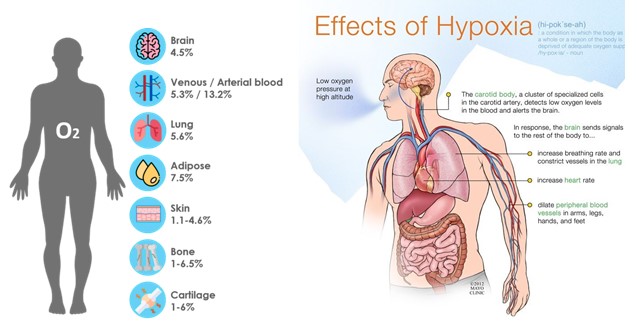The nurse is assessing the patient's lips and notes a bluish tinge. This finding would indicate that the patient may be experiencing which problem?
Inflammation of the lips
Hypoxia
Beginning of a liver blister
Lack of dental care
The Correct Answer is B
Hypoxia is a medical condition characterized by a lack of oxygen in the body's tissues, which can occur due to a variety of reasons, such as respiratory failure, cardiac arrest, or other serious medical conditions. Cyanosis occurs when the oxygen saturation level in the blood falls below 85%, which causes a bluish color to appear on the skin, especially on the lips and fingertips. Therefore, if a nurse observes cyanosis in a patient's lips, it is a significant sign of hypoxia, and the patient requires immediate medical attention.

Nursing Test Bank
Naxlex Comprehensive Predictor Exams
Related Questions
Correct Answer is C
Explanation
REM (Rapid Eye Movement) sleep is a stage of sleep that is part of the sleep cycle, which also includes non-REM (NREM) sleep. Dreaming occurs during REM sleep, and it usually composes about 20-25% of total sleep time in adults. NREM sleep, on the other hand, makes up the largest amount of total sleep time, typically about 75-80%. Both REM and NREM sleep are important for restorative sleep, but each plays a different role in physiological and cognitive functioning.

Correct Answer is ["A"]
Explanation
To map the client's abdomen into four quadrants, the nurse should use the umbilicus as the landmark to perform this assessment. The abdomen is divided into four quadrants by drawing an imaginary line from the center of the umbilicus to the pubic symphysis and another line from the center of the umbilicus to the xiphoid process of the sternum. This helps in identifying the location of any potential abdominal discomfort or tenderness.
Whether you are a student looking to ace your exams or a practicing nurse seeking to enhance your expertise , our nursing education contents will empower you with the confidence and competence to make a difference in the lives of patients and become a respected leader in the healthcare field.
Visit Naxlex, invest in your future and unlock endless possibilities with our unparalleled nursing education contents today
Report Wrong Answer on the Current Question
Do you disagree with the answer? If yes, what is your expected answer? Explain.
Kindly be descriptive with the issue you are facing.
